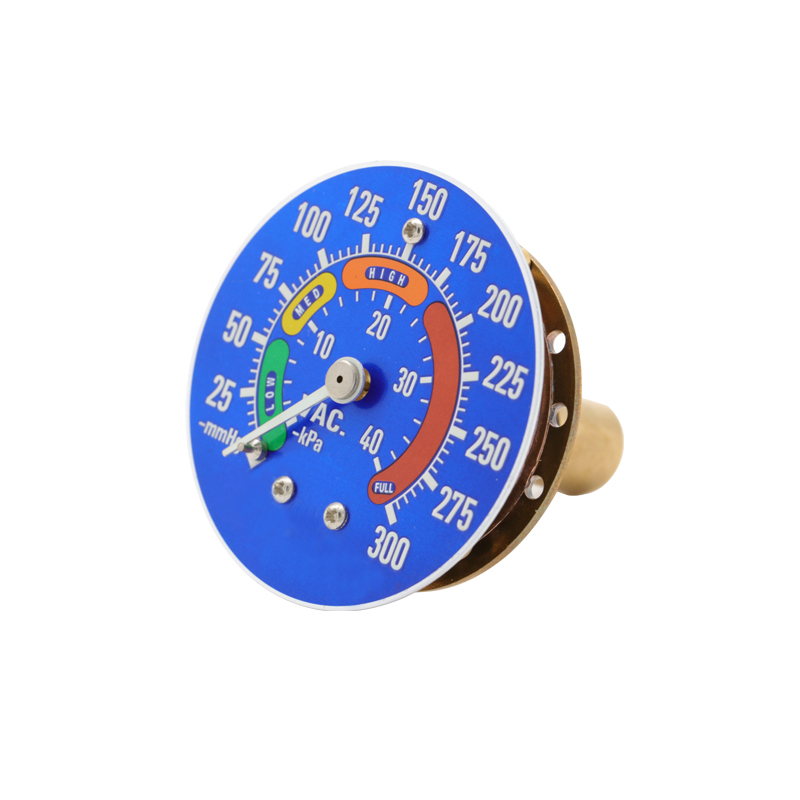
Nov . 27, 2024 08:36 Back to list
Types of Diaphragm Seal Pressure Gauges and Their Manufacturing Processes
Understanding Diaphragm Seal Type Pressure Gauges
Pressure gauges play a critical role in various industrial applications, providing real-time monitoring of pressure levels. Among the various types of pressure gauges, diaphragm seal type pressure gauges stand out due to their reliability and accuracy in measuring pressure in harsh environments. This article aims to explore diaphragm seal type pressure gauges, their construction, benefits, and applications.
What is a Diaphragm Seal Type Pressure Gauge?
A diaphragm seal type pressure gauge consists of a pressure sensing element (the diaphragm) that separates the measuring fluid from the pressure gauge mechanism. This is particularly useful in applications where the measuring media is corrosive, viscous, or contaminated, preventing damage to the gauge and ensuring accurate readings.
The pressure gauge employs a flexible diaphragm made from materials such as stainless steel, Hastelloy, or Teflon, depending on the nature of the process fluid. The diaphragm deflects in response to pressure changes, transmitting the force to the pressure measuring device (usually a Bourdon tube or a piezoresistive sensor) through a filling fluid that transfers the pressure signal.
Construction and Mechanism
The basic construction of a diaphragm seal type pressure gauge involves several components
1. Diaphragm This is the primary sensing element that reacts to pressure changes. Its material and thickness are chosen based on the application's requirements, including temperature, pressure range, and compatibility with the media.
2. Seal The diaphragm is coupled with a housing that creates a sealed chamber. This prevents the pressurized media from coming into direct contact with the internal mechanisms of the gauge.
3. Filling Liquid The space between the diaphragm and the gauge mechanism is filled with a specially chosen liquid. Common filling liquids include glycerin or silicone oil, which not only assist in transmitting pressure but also help dampen vibrations, providing a stable reading.
4. Gauge Mechanism The pressure changes processed by the diaphragm are transmitted through the filling liquid to the gauge mechanism. This mechanism then converts the mechanical deflection into a readable value, often displayed on a dial or a digital screen.
Benefits of Diaphragm Seal Type Pressure Gauges
Diaphragm seal type pressure gauges offer several advantages
diaphragm seal type pressure gauge factories

- Protection Against Contamination By isolating the measuring media, diaphragm seals prevent contaminants from damaging the gauge mechanism, ensuring longevity and reliability.
- Wide Application Range These gauges can handle high temperatures and pressures, making them suitable for diverse industries such as oil and gas, chemical manufacturing, food processing, and pharmaceuticals.
- Enhanced Accuracy The use of a filling fluid minimizes the effects of vibrations and temperature fluctuations, thereby improving measurement accuracy.
- Maintenance-Free Operation The sealed design requires minimal maintenance, reducing the operational costs associated with gauge upkeep.
- Adaptability Diaphragm seal type pressure gauges can be customized in terms of size, scale, and materials, making them adaptable to specific operational needs.
Applications of Diaphragm Seal Type Pressure Gauges
These specialized gauges find applications in various fields, including
- Chemical Industry In processes involving corrosive chemicals, diaphragm seals protect sensitive components from aggressive substances.
- Food and Beverage Diaphragm seals help ensure hygiene standards by preventing direct contact with food products, making them crucial in food processing and packaging.
- Oil and Gas These gauges are employed in monitoring pressure in pipelines and storage tanks, where harsh conditions may exist.
- Pharmaceuticals The need for purity and compliance with strict regulations makes diaphragm seal type gauges essential in pharmaceutical manufacturing.
Conclusion
Diaphragm seal type pressure gauges represent a robust solution for accurate pressure measurement in challenging environments. Their unique design not only extends the lifespan of the gauge but also enhances the reliability of pressure monitoring systems across various industries. By understanding the features and benefits of these gauges, businesses can make informed decisions to improve their operational efficiency and safety.
-
High-Precision 5 Valve Manifold Differential Pressure Gauge Suppliers
NewsApr.29,2025
-
High-Precision Diaphragm Vacuum Pressure Gauges Manufacturers & Quotes
NewsApr.29,2025
-
Omega Differential Pressure Gauges High Accuracy & Durability
NewsApr.28,2025
-
Low Pressure Differential Pressure Gauges Precision Solutions & Quotes
NewsApr.28,2025
-
Digital Diaphragm Pressure Gaauge Precision Measurement & OEM Quotes
NewsApr.28,2025
-
Differential Pressure Gauge China Price High-Accuracy & Best Quotes
NewsApr.28,2025
